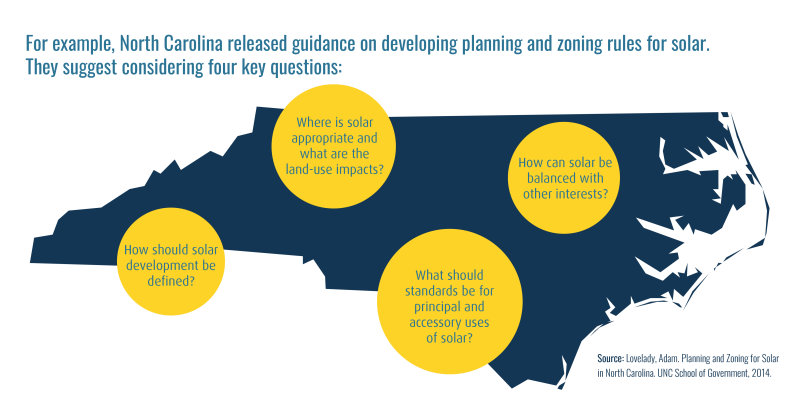Zoning and siting regulations are used by local jurisdictions to manage land use, regulate development and construction, and create separate districts for residential, commercial, and industrial activity. It has previously been good practice to separate residential neighborhoods from traditional electricity generation; however, solar panel placement poses different land use considerations than those associated with electricity generation from fossil fuels. States have begun to address this by defining the “solar energy system” with associated siting rules for their development. This specific definition ensures a standard procedure for solar deployment, which can streamline the development process, minimize application review times, and reduce project delays. Other states have gone further, including access to sunlight as a property right, so new construction will not negatively impact solar arrays.

Key topics and strategies:
- Develop state-wide templates and/or models for local zoning ordinances. Helps reduce the workload for municipalities and create a consistent market for solar deployment in the state. See examples from North Carolina and New York State.
- New York State created a step-by-step guide to siting plans, as well as special use permits to allow solar deployment in areas such as agricultural districts.
- Pre-empt local restrictions on solar development imposed through zoning and siting rules. Maryland passed statewide protections for solar deployment in 1980.